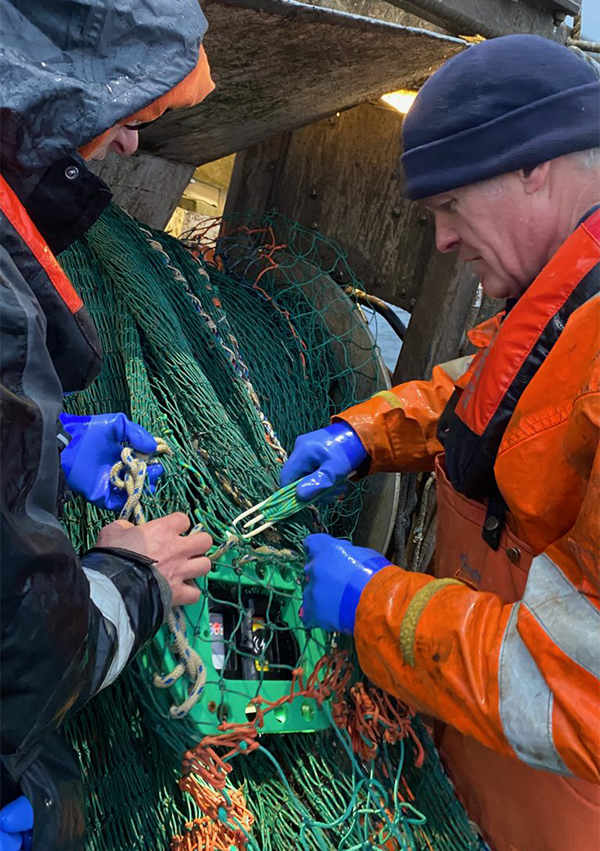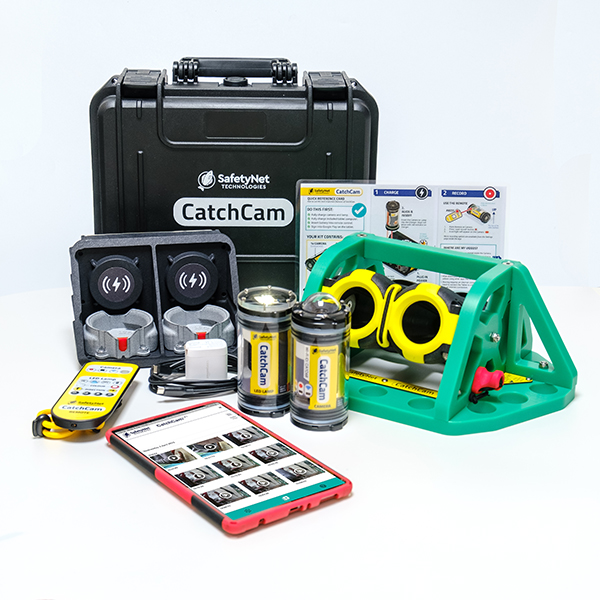SafetyNet Technologies seeks to understand fishers’ worlds and lean on their experience

Despite efforts to reduce unwanted animals from being caught by fishers, bycatch is still a problem. According to the World Wildlife Foundation, bycatch makes up 40 percent of fish catch worldwide. That’s about 38 million metric tons, including 300,000 small whales and dolphins, 250,000 endangered turtles and 300,000 seabirds.
Low-tech solutions like nets with varying mesh sizes or turtle escape hatches have worked in reducing bycatch numbers overall. Now, high-tech bycatch reduction devices are starting to enter the fray, with scientists testing and deploying solutions like data analytics, remote-control and camera-enabled lights and sensors trained by artificial intelligence (AI) to continue to reduce bycatch numbers.
“It’s very much precision fishing,” said Tom Rossiter, sales lead at SafetyNet Technologies, who sees technologies to reduce bycatch as an extension of “precision farming and agriculture. It’s doing the best possible job you can with the resources you have available, so you don’t overfish.”
Rossiter said that reducing bycatch starts before a vessel sets out to sea – or if it sets out at all – by taking information like water temperature, salinity and turbidity to determine if the intended catch is there and if it’s worth the time and resources (and potential bycatch) to set out: “Having information at hand to allow you to make that decision is really important,” Rossiter said. “If you think about fishing, it’s you as a fisherman, you’re at the surface and your world is down below. There’s a massive gap between you and it.”
SafetyNet is also creating devices that go into the water to attract wanted targets — and push everything else out. Three years ago, it released Pisces, a device about the size of a smoke detector, that uses LED lights that can be adjusted to different colors, frequencies, brightness and flash, to attract or repel specific kinds of animals.
“Some animals will see certain colors and others won’t. The idea is you try and tune that to the animal you’re trying to work with via excluding or attracting,” he said.
The first version worked fine in a test tank but wasn’t as effective when out in open water. Fishers immediately noticed problems with it in a real-world environment; some couldn’t control the device or see what it was doing (or attracting or deterring from coming into their nets).
Could an electric-pulsed device help mitigate shark bycatch in longline fisheries?
SafetyNet took that feedback from end users and re-engineered the device to include things like wireless controls, so fishers could change the lighting. They also created CatchCam – a wireless, remote-controlled, underwater camera that allows fishermen to see what’s happening in the water via a smartphone app. It can be used with Pisces, or on its own, to help fishers see what’s happening at their gear while it’s in use.

In addition to private sector innovation, there’s also been an injection of government funding into reducing bycatch. In 2020, for example, the National Oceanic and Atmospheric Administration’s National Marine Fisheries Service funded 13 projects, totaling $2.3 million, targeting bycatch reduction. Those projects included things like ropeless lift-bag systems, targeted acoustic startle technology, acoustically enhanced gillnets and semipelagic trawl technology.
For bycatch reduction technologies to be adopted, however, they must also be accepted by fishers. Rossiter said that SafetyNet learned quickly that their products weren’t going to work without real-world testing or buy-in from the people who would eventually use them.
“We’ve been guilty as scientists or researchers and just humans in trying to oversimplify this,” he said. “In reality, [a fisher’s] world is probably a lot more complex than our own. If we want to try to achieve things, we’ve got to understand that better. If not, we’re just pushing water uphill.”
This is a long-standing problem with adopting bycatch technology solutions, according to Petri Suuronen, a fisheries expert for the International Seafood Consulting Group. He recently published a paper on understanding these barriers to adoption in the ICES Journal of Marine Science.
“I’ve been in the research and development community for almost 40 years and have realized that we seldomly get very good results when it comes to implementation and acceptance [of bycatch reduction technology],” he said. “We may have invented fancy technologies and tools, but often fishermen don’t want to use them as such.”
One problem is that scientists often work in a bubble. Once they come up with a new solution, “it’s just the beginning,” he said. “We simply have not been working closely enough with the fishing sector. We take it to them way too late in the process. In fact, it should be the opposite.” Legislation and economic incentives aren’t always enough, he added, especially if new technologies are pushed onto fishermen before they’ve been thoroughly tested and proven effective in real-world environments.
Collaborating with fishers has been critical in developing SafetyNet’s products, Rossiter said. Not only does their feedback help to recognize blind spots, but actively collaborating with the end users makes them feel like a bigger part of the process overall, which leads to greater adoption.
That’s critical as consumers become more aware about where their food comes from, and the impacts bringing that food to them has on the environment.
“Seafood consumers are more educated, but it’s also the right bloody thing to do,” said Rossiter about using bycatch reduction devices. “It makes economic sense. It makes ecological sense. It makes well-being sense.”
Follow the Advocate on Twitter @GSA_Advocate
Now that you've reached the end of the article ...
… please consider supporting GSA’s mission to advance responsible seafood practices through education, advocacy and third-party assurances. The Advocate aims to document the evolution of responsible seafood practices and share the expansive knowledge of our vast network of contributors.
By becoming a Global Seafood Alliance member, you’re ensuring that all of the pre-competitive work we do through member benefits, resources and events can continue. Individual membership costs just $50 a year.
Not a GSA member? Join us.
Author
-

Jen A. Miller
Jen A. Miller is a New Jersey-based writer whose work has appeared in everything from The New York Times to Engineering News Record.


